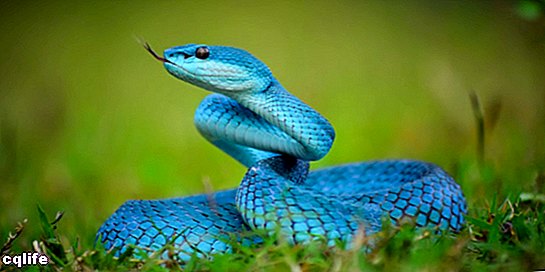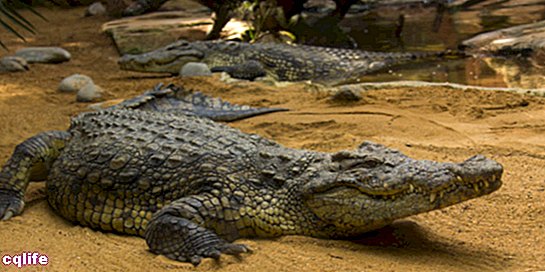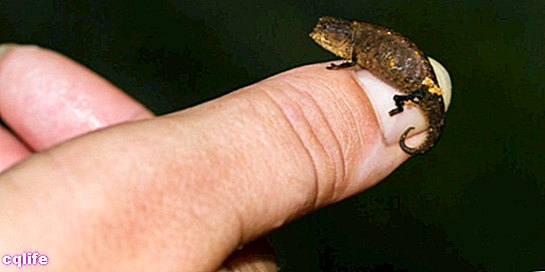- What are reptiles?
- Characteristics of reptiles
- Types of reptiles
- Reproduction of reptiles
- Digestive system of reptiles
- The dinosaurs
- Reptiles in danger of extinction
- Examples of reptiles
We explain what reptiles are, their characteristics and the types of reptiles that exist. How is its reproduction and digestive system.

What are reptiles?
We call reptiles to a group of quadruped animals andvertebrates, cold-blooded, whose main characteristic is having a skin covered with keratin scales. Are animals very abundant, especially in habitats warm, whose name comes from their way of walking: it comes from the Latinreptile, "That creeps."
The reptiles appeared on the Earth 318 million years ago and they were the predominant way of life during the Mesozoic (Triassic, Jurassic, Cretaceous), in the so-called “Age of the dinosaurs”. They are evolutionarily related toamphibians and the birds; and some prehistoric reptilian species gave rise to the first mammals.
In the cultures humans, reptiles have a presence that is both fascinating and frightening, given their dry, millennial appearance, and their ferocity in the case of large predators like crocodiles, alligators and snakes. Many have been associated with sinister powers or with demonic entities, as is the famous case of the serpent in the Garden of Eden narrated in theBible.
Characteristics of reptiles

Reptiles, broadly speaking, have adapted to terrestrial life, although many species have subsequently returned to aquatic environments to prey. This means that they have breathing pulmonary, with a double circulatory system and a series of adaptations that allow them to conserve Water the more possible. Their scaly skin is tough and rough, and allows them to warm the body by exposing it to the sun, since reptiles cannot internally regulate the temperature bodily.
Their bodies are generally quadruped, although some species have lost their legs, such as snakes, and others have a rigid shell integrated into the skeleton (such as turtles). They generally have a good sense of smell and in the case of snakes a sense of touch that allows them to perceive vibrations of the I usually.
Types of reptiles

There are four large groups of reptiles:
- Turtles (testudines). Adapted to aquatic habitats me terrestrial, have a rigid shell that is born from the endoskeleton itself and protects the torso of the animal. They have a horny beak in the mouth and a small tail, as well as four legs.
- Scaled lizards (squamata). Like lizards and snakes, they may or may not have legs, respectively, and have long bodies covered in thick, rough scales, which provide protection and prevent desiccation of the body.
- Alligators and crocodiles (crocodylia). Terrestrial but with aquatic eating habits, they are some of the fiercest reptilian predators on the African and American continents, thanks to their enormous toothed jaw and robust muscular bodies.
- Tuátaras (rhynchocephalia). A group of living fossils that today includes a single genus,Sphenodon, of three species, endemic to New Zealand. They are reptiles of about 70cm in length and evolutionarily very close to dinosaurs.
Reproduction of reptiles
The reproduction of reptiles is sexualIn other words, it involves the internal fertilization of the female by the male during copulation, as well as the exchange of gametes (sex cells). Later, the female lays eggs, usually in a nest that she fiercely protects, or buried near water (like turtles). From them emerge the young, identical to their parents but smaller, without the need for metamorphosis of any kind.
Digestive system of reptiles

Reptiles possess a digestive system simple and short, that adapted for the decomposition of the meat, since they are in their majority predators. Their digestion is however much slower than in mammals, in part because they are unable to chew food and must swallow it in large pieces (or complete in the case of boas), so it is usual to see them sleep or rest. after feeding.
There are also reptiles herbivoresOf course, in the absence of the possibility of chewing, they swallow stones with which to grind the food eaten, just like birds do. In addition, these rocks serve as ballast for marine species, facilitating immersion.
The dinosaurs

During the Mesozoic Era, some 251 million years ago, reptiles dominated the earth and were the dominant group, acquiring enormous size and diversification never seen before (or since). These large reptiles existed for almost 200 million years until they became extinct in the transition from the Cretaceous period to the Cenozoic Era, 65 million years ago, for reasons that are unknown, but whose evidence points to a global catastrophe. Of these creatures only fossil records remained, which when discovered by the humanity they received the name ofdinosaurs, that is, "terrible lizards" in Latin.
Reptiles in danger of extinction

Many reptilian species are today at risk of disappearing due to the action of the human being. Among them, the following stand out:
- Dwarf chameleonBradypodiontaeniabronchum). Tiny version of ordinary chameleons, native to South Africa.
- Ricord's iguana (CycluraRicordi). Endemic of the island of Hispaniola, in the Caribbean, there are few populations southwest of the Dominican Republic.
- Giant lizard of La Palma (Gallotiaauaritae). Endemic to the Canary Islands, it has been becoming extinct since humans colonized the island of La Palma, due to the introduction of cats, the farming and their indiscriminate hunting.
- Orinoco Cayman (Crocodylusintermedius). It is the largest predator of the Latin America, endemic to the Orinoco River region in Venezuela. It has a maximum length of 7 meters and is in critical danger of extinction.
- Hawksbill turtle (Eretmochelysimbricata). It is a species of marine turtle with a mottled body and whose meat and shells are highly coveted, which is why they have been hunted to practically extinction.
- Chinese crocodile (Alligatorsinensis). Endemic to the mouths of the Yangtze River in China, it is color dark green to black, and lives for about 40 years.
Examples of reptiles

A perfect example of reptiles are the water turtles that many of us had as children as pets (Trachemysscripta), as well as common iguanas (Iguana iguana) that in many tropical countries can be seen wandering the countryside or even some cities. Also the Iranian crocodiles (Crocodyluspalustris) of zoos, the green anacondas of the Amazon (Eunectesmurinus) or house lizards or geckos (Hemidactylusmabouia) that we can find by climbing the walls of American homes.
